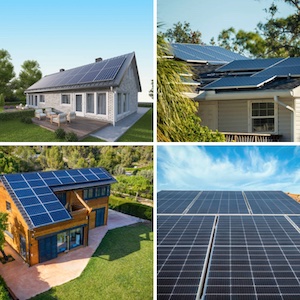Maximising Savings With Solar
Maximising Savings With Solar
Residential solar systems are transforming how households manage energy costs, offering a sustainable way to reduce reliance on Eskom and unlock significant savings. With electricity tariffs rising, solar power provides a hedge against unpredictable costs while contributing to a greener future. In the Western Cape, where innovative policies shine, homeowners can amplify their savings by feeding excess power back to the grid. Here’s how to make the most of solar energy at home.
Understanding Solar Savings
Eskom’s tariffs currently average around R2.40 per kWh, with annual increases outpacing inflation. For a household consuming 600 kWh monthly, that’s roughly R1,440 before additional charges. Solar systems can slash this bill by generating free electricity during daylight hours. A typical 5 kW system produces about 750 kWh per month, covering a significant portion of usage for small to medium households. Key factors influencing savings include:
- System Size: A 5 kW system costs around R100,000–R150,000, including installation.
- Consumption Patterns: Daytime-heavy usage maximises savings without needing costly batteries.
- Maintenance: Panels require minimal upkeep, with lifespans exceeding 20 years.
While upfront costs seem high, savings accrue over time. A 5 kW system could save R15,000–R20,000 annually, depending on usage, with a payback period of 5–7 years. Tax incentives, like accelerated depreciation for systems under 1 MW, can further reduce costs for those eligible.
Feeding the Grid in the Western Cape
The Western Cape stands out as a leader in solar adoption, thanks to forward-thinking governance that allows households to feed surplus power back to the grid. This net-metering system, unique in the country, credits homeowners for excess electricity at rates around 73–80 cents per kWh, depending on the municipality. For a household with a 5 kW system generating 750 kWh but using only 500 kWh monthly, the surplus 250 kWh could earn R182–R200 in credits, lowering bills further. Benefits include:
- Reduced Payback Time: Credits accelerate the return on investment.
- Grid Support: Feeding power back eases pressure on local networks.
- Smart Meters: Municipalities install bi-directional meters, though a daily fee (e.g., R12.36 in Cape Town) applies.
This system rewards efficient energy use and makes solar even more attractive for Western Cape residents.
Practical Tips for Maximising Returns
To get the most from a solar investment, strategic planning is key. Start by assessing your household’s energy needs—check past bills to estimate kWh usage. Opt for energy-efficient appliances to lower consumption, stretching solar output further. In the Western Cape, time your high-energy tasks for daylight hours to avoid drawing from the grid at night when rates are higher. Consider hybrid systems with battery storage if nighttime usage is significant, though batteries add R50,000–R100,000 to costs. Finally, choose reputable installers to ensure quality and compliance with municipal regulations, especially for grid-tied systems. By aligning your setup with your lifestyle and local incentives, solar power becomes a powerful tool for long-term savings and energy independence.
Where Are You In Your Solar Journey
Researching

Ready For Quotes

Already Installed

Contact Us
Contact
+27 (0) 71 087 6723
info@solarcentral.co.za
Address
210 Amarand Avenue, Waterkloof Glen
Pretoria, South Africa
Schedule
24 Hours / 7 Days Open
Office time: 10 AM - 5:30 PM
Platform
get in touch
Ready to Get Started
Please fill out this form and we will get in touch with you shortly.
